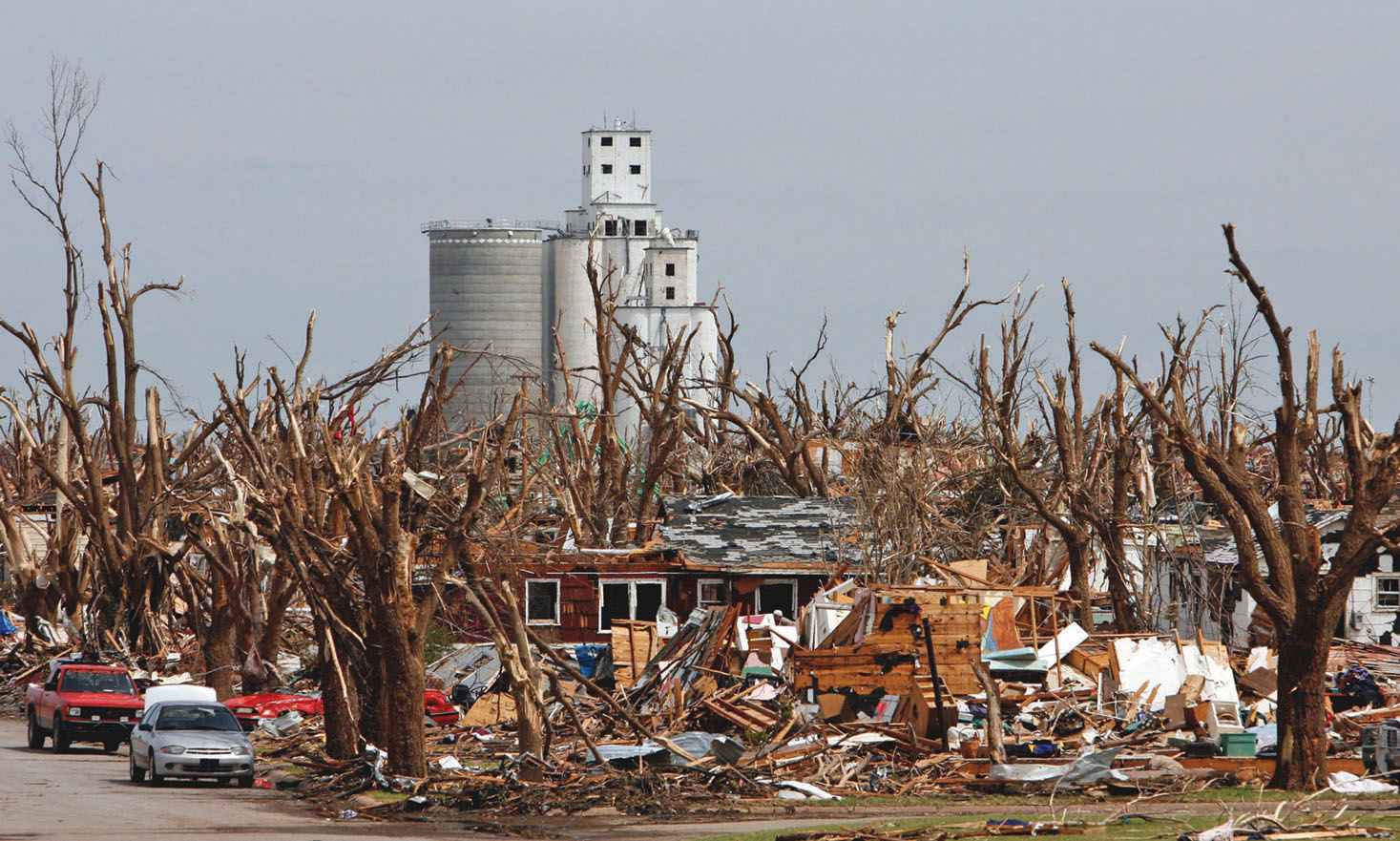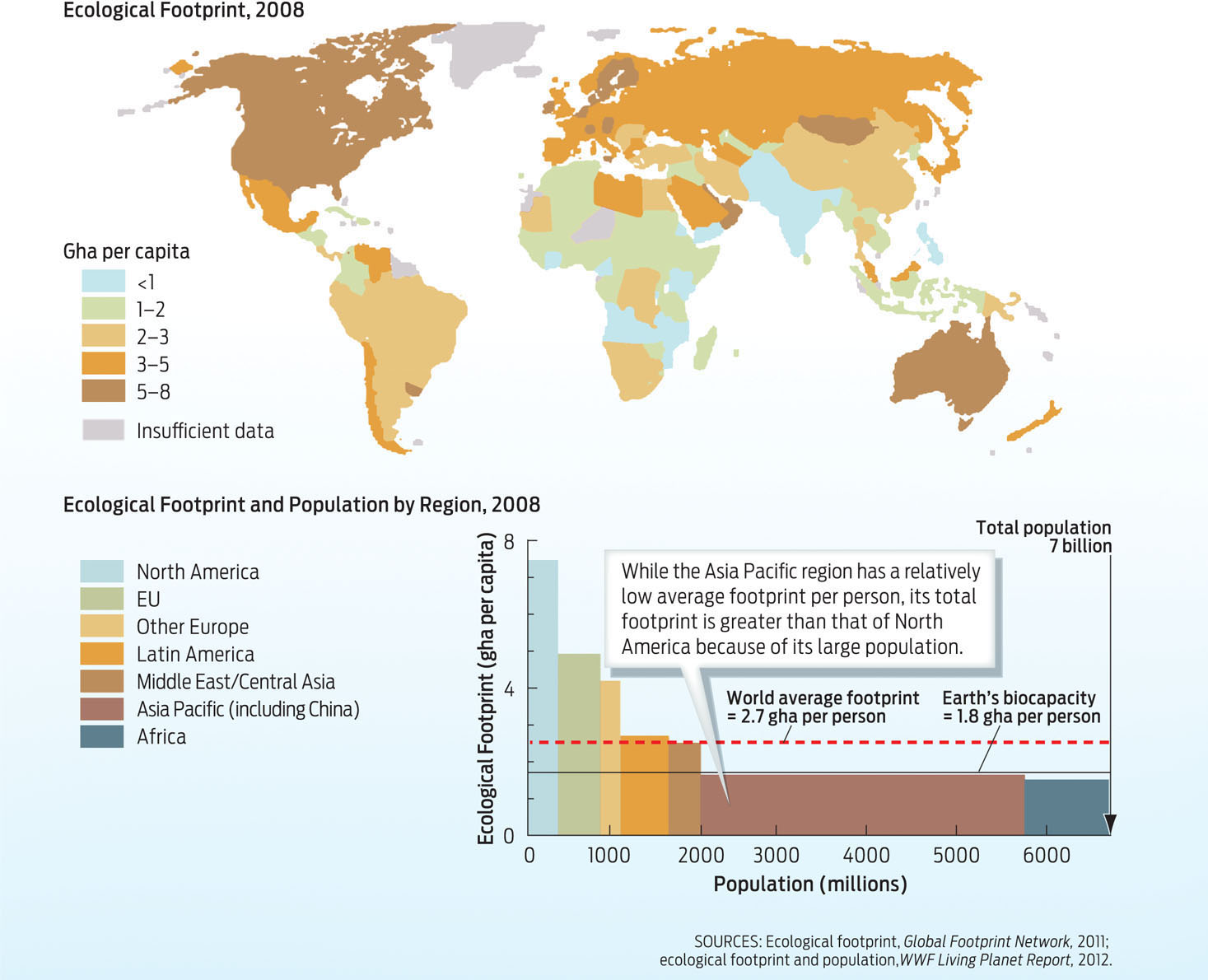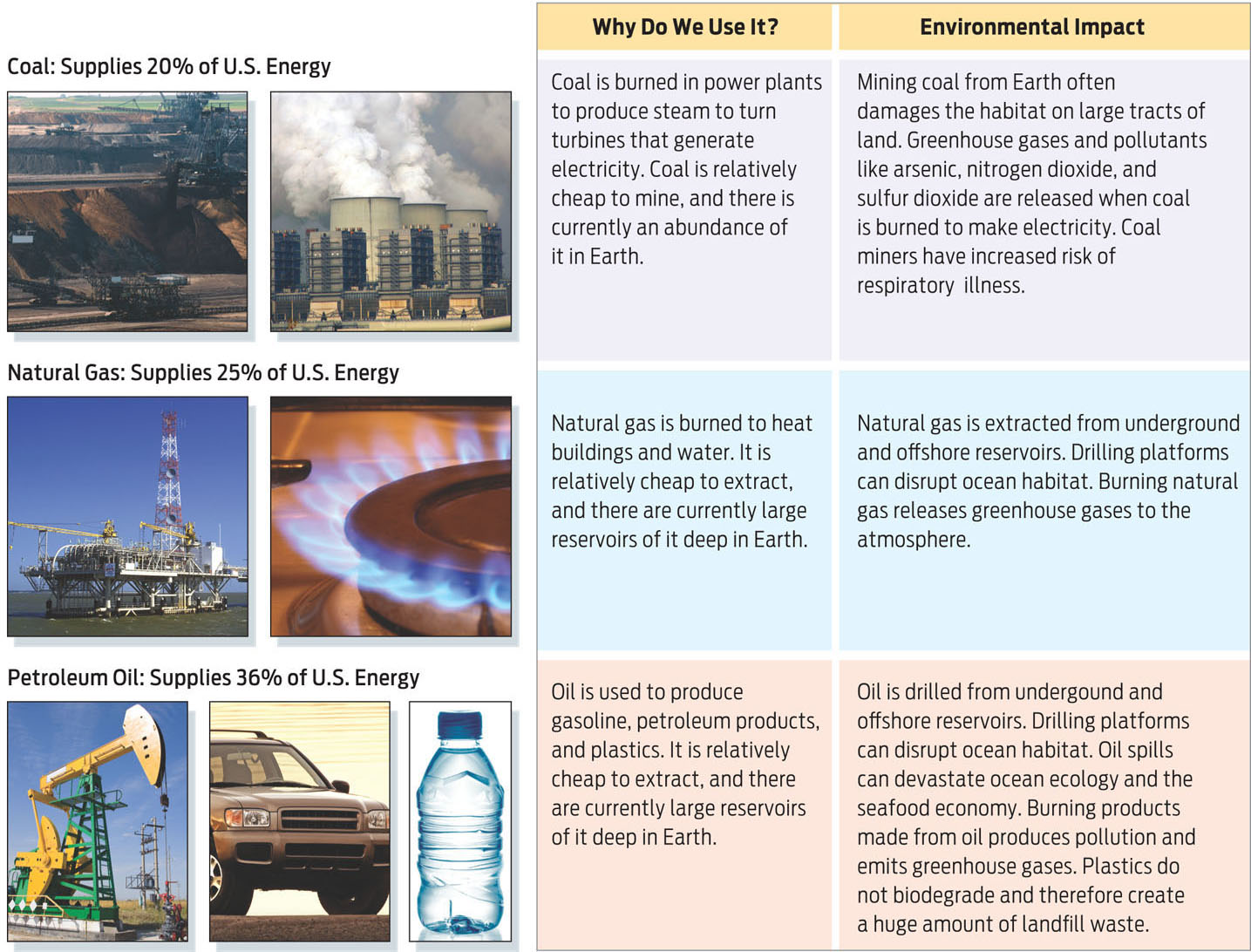GOING GREEN
An ambitious young professional with a wife and son, Hewitt was one of the first to start thinking about rebuilding in a fundamentally different way. He saw in the catastrophe an opportunity to fix problems that had plagued Greensburg before the storm—things like crumbling infrastructure, a lackluster economy and jobs base, and dim prospects for future growth.
In the days immediately following the storm, he met with the mayor and Kansas Governor Kathleen Sebelius to discuss ideas for improving on the old ways. Sebelius listened patiently to what Hewitt was saying about rebuilding smarter, with an eye toward economic growth, and then summarized what she heard in one simple statement: “Steve, you’re talking about green.”
SUSTAINABILITY The use of Earth’s resources in a way that will not permanently destroy or deplete them; living within the limits of Earth’s biocapacity.
Hewitt hadn’t immediately connected his ideas to a green agenda, but the conceptual beauty was not lost on him. This was Greensburg, after all. “You’re right,” he said. “That is what we’re talking about.” From there, the idea took off.
A small town in Kansas might seem like a strange place for an environmental movement to emerge. After all, this is a politically conservative area, in a staunchly red state, where climate change is still viewed skeptically by a large proportion of the population. “Green, I thought that was just for people who hug the trees,” said one resident at an early town meeting called to discuss the idea of rebuilding green. But Greensburg residents—even those who did not see themselves as environmentalists—eventually warmed to the idea of putting the green in Greensburg. What sold them was the concept of living more sustainably.
NATURAL RESOURCES Raw materials that are obtained from Earth and are considered valuable even in their relatively unmodified, natural form.
Sustainability means different things to different people, and it can be a difficult thing to define and measure. “In its simplest sense, sustainability is just doing things today to ensure a vibrant successful future for others,” says Stacey Swearingen White, a professor of environmental planning at the University of Kansas.
524
To ecologists, sustainability has to do with the way humans use Earth’s resources. We require a variety of natural resources to live: farmland to grow crops and raise cattle, gasoline to power cars, oxygen to fill our lungs, to name just a few. In addition to providing us with natural resources, Earth acts like a sponge, absorbing our wastes. The carbon dioxide we emit, for example, is soaked up and stored by plants; the garbage we produce is decomposed in landfills.
525
The collective demand we place on these resources is referred to as our ecological footprint. This measure is a tally of the land and water area needed to supply a given population with resources and to absorb its wastes. By quantifying the amount of biologically productive area it takes to sustain our lifestyles, the ecological footprint puts a number on our environmental impact (INFOGRAPHIC 24.1) .
How much of Earth’s resources does your lifestyle require? The ecological footprint is a measure of our demand on nature. Ecologists use 5,400 different measures gathered from government agencies and scientific publications to calculate a footprint, a measure of how much biologically productive land and water area (cropland, forests, grazing lands, fishing area, and built-up land) a human population requires to produce the resources it consumes and to absorb the waste it produces.

ECOLOGICAL FOOTPRINT A measure of how much land and water area is required to supply the resources an individual or a population consumes and to absorb the wastes it produces.
BIOCAPACITY The amount of Earth’s biologically productive area—cropland, pasture, forest, and fisheries—that is available to provide resources and absorb wastes to support life.
GLOBAL HECTARE (GHA) A unit of measurement representing the biological productivity (both resource-providing and waste-absorbing capacity) of an average hectare of Earth.
The human ecological footprint is often compared with Earth’s biocapacity-its ability to sustain human demand given its available natural resources and its ability to absorb waste. If we think of the footprint as our demand on Earth, the biocapacity is the amount of supplies that Earth can produce to meet that demand. The question is: does Earth have a sufficient supply of resources to meet our demands?
Earth’s biocapacity is measured in units called global hectares (gha). One global hectare represents the biological productivity—both the resource-providing and waste-absorbing capacity—of an average hectare of Earth’s surface (including cropland, pasture, forest, and fisheries). A hectare is 10,000 square meters—about the size of a soccer field. In 2008 (the last year for which data are available), Earth’s total biocapacity was 12 billion gha, or 1.8 gha per person. That same year, the average ecological footprint was 2.7 gha per person per year. In other words, it takes more than two and a half soccer fields of land and water area to support one average human for 1 year. Since the average human ecological footprint is greater than Earth’s total biocapacity, our demand on Earth’s resources is currently outstripping its supply (by almost 1 gha per person).

How is this possible when there is only one Earth? You can think of Earth as being like an interest-earning bank account: it has a certain amount of natural capital that is continually renewing itself. Just as it is possible to overdraw a bank account faster than the interest can regenerate the principal, our demands on Earth’s resources are diminishing the natural capital faster than it can be renewed. We’re living in the red (INFOGRAPHIC 24.2) .
When comparing our biological demand, or ecological footprint, with Earth’s biocapacity, it is clear that our footprint has been exceeding biocapacity since the mid-1970s. Our greatest demand is energy, indicated by our large carbon footprint.

526
These footprint numbers are averages, tallied across the whole globe. But, of course, not everyone on the planet uses resources to the same extent. An average American, for instance, has an ecological footprint of about 7.2 global hectares, while the average Haitian uses just 0.60 global hectares. These are per capita figures, averages for one resident in each of those countries. It’s also possible to calculate the ecological footprint of a whole country. China, for example, has a per capita footprint of 2.1 global hectares, much smaller than that of the United States, but because China’s population is so large, its total footprint is larger than that of the United States, which has fewer people. In fact, China has the largest total footprint in the world (INFOGRAPHIC 24.3) .
Per capita, the United States has a larger footprint than most other world populations. However, the enormous size of some populations, like China’s, means that their total footprint is greater than that of the United States-in fact, China has the largest footprint in the world.

According to ecological footprint analysis, if everyone on the planet were to live like the average resident of the United States, it would take about four Earths to support us. By contrast, if everyone in the world lived like the average person in Indonesia, we would need two-thirds of an Earth to sustainably satisfy our demands.
What is it about the U.S. lifestyle that leaves such a heavy footprint compared to other countries? Energy consumption, by far, is the largest culprit. The cars and SUVs we drive, the computers we work and play with, the washers and dryers that clean our clothes, the air conditioners that cool our homes, the food we truck across the country or fly around the world—all these require energy. Globally, the energy component of our ecological footprint increased roughly 700% between 1961 and 2008, accounting for roughly half our total current footprint.
527
In the United States, as in most parts of the world, most of this energy comes from fossil fuels—oil, coal, and natural gas. As discussed in Chapter 23, burning fossil fuels releases carbon dioxide to the atmosphere, contributing to global warming. Therefore, the ecological footprint takes into account the amount of land and water area needed to absorb CO2. This, combined with increased consumption, is what makes our ecological footprint so large.
528
Because they take millions of years to form naturally, fossil fuels are considered nonrenewable resources: once depleted, they are essentially gone for good. Besides contributing to our carbon footprint, burning these non-renewable resources also releases pollutants such as sulfur dioxide and nitrogen dioxide, which contribute to acid rain. Coal also contains toxic elements such as arsenic and fluorine, which can cause bone and lung disease when inhaled or consumed. For many reasons, urban planners are eager to wean people off fossil fuels (INFOGRAPHIC 24.4) .
Most of the natural resources we use to supply our energy needs are nonrenewable. Coal, oil, and natural gas are fossil fuels that take millions of years to form as organic material is compressed by layers of sedimentary rock. While plentiful today and relatively cheap to obtain, fossil fuels come with significant environmental and human costs.

NONRENEWABLE RESOURCES Natural resources that cannot easily be replaced; fossil fuels are an example.
529
 We really believe that the best economic solutions can usually be, and often are, green solutions.
We really believe that the best economic solutions can usually be, and often are, green solutions.
— LYNN BILLMAN
Hewitt didn’t talk about ecological footprints at the first town meeting he called, which was held in a giant striped circus tent 1 week after the tornado and attended by about 700 town residents. But he knew that the idea of sustainability would resonate with this group of midwesterners whose pioneering ancestors had settled the area generations ago. As farmers, many of them had an intrinsic connection to nature and an awareness of the goods it can provide if managed properly.
Environmental concerns are crucial to the concept of sustainability, but they aren’t the whole story. “The term sustainability often gets focused exclusively on environmental aspects,” says White. “I’m an environmental planner so those are near and dear to my heart, but I think true sustainability also has to bring in the social or the equity concerns as well as economic concerns.”
Greensburg residents recognized the importance of these factors, too. As the building plan the town eventually drew up stated, “A truly sustainable community is one that balances the economic, ecological, and social impacts of development.”